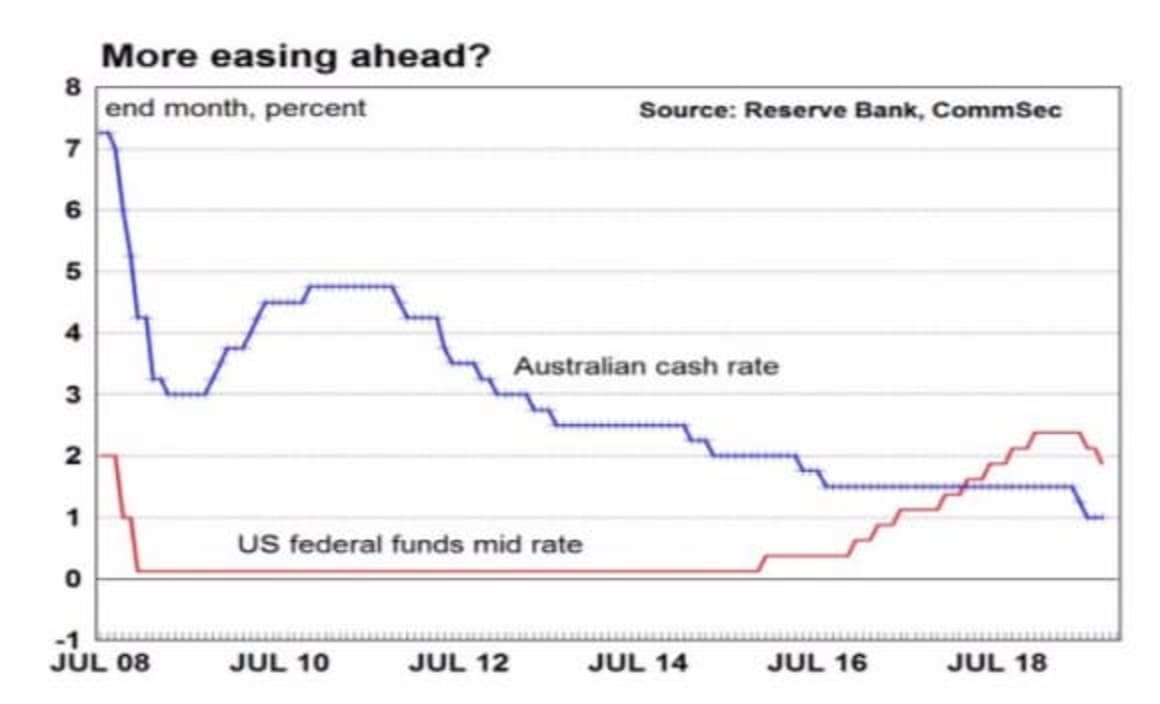US Fed cut a “moderate” policy move: CommSec

EXPERT OBSERVER
As expected, the US Federal Reserve’s Open Market Committee (“FOMC”) reduced the target range for the federal funds rate by 25 basis points (quarter of a per cent) to between 1.75-2.00 per cent – the second successive rate cut.
The FOMC cited “the implications of global developments for the economic outlook as well as muted inflation pressures” as the primary reason for the cut. FOMC members voted 7-3 to cut interest rates, with one member voting for a 50 basis point cut.
The FOMC’s updated quarterly “dot plot” federal funds rate projections showed officials divided about the future direction of interest rates.
Seven FOMC decision makers projected another 25 basis point cut before year-end, but no further cuts in 2020 to 2022. While five FOMC policymakers see rates going back to between 2.00 per cent and 2.25 per cent by year-end.
In his press conference, US Federal Reserve Chair Jerome Powell opened the door to “more extensive sequences of [rate] cuts” if needed, but emphasised that the situation should viewed as one “which can be addressed and should be addressed with moderate adjustments to the federal funds rate.” But the Fed will “act as appropriate to sustain the expansion.”
Changes in US monetary policy settings can affect rates in Australia as well as the sharemarket and currency.
What did the US Federal Reserve decide and what does it all mean?
Global central bankers are lowering interest rates in response to slowing economic growth. The current US expansion - while the longest in post-war history - is losing momentum. The US-China trade war, including the imposition of ‘tit-for-tat’ tariffs on imports, has reduced trade volumes and contributed to a manufacturing recession in export-dependent economies, such as Germany, China and Japan.
Trade policy uncertainty has weakened US business investment and lowered export growth. The concern of course is that the dispute will remain unresolved, with the slowdown in manufacturing activity spilling-over into the larger services sector, eventually impacting still-solid jobs growth and buoyant consumer spending.
Household consumption remains the key driver of economic activity, growing at the fastest pace in the June quarter since 2014. Retail sales also increased by 0.8 per cent in July and 0.4 per cent in August, supported by solid job gains and wages growth.
Despite the uncertain global geo-political backdrop, FOMC members raised their expectations for US economic growth, with GDP growth now expected to grow at a 2.2 per cent annual pace this year, up from a forecast of 2.1 per cent in June. That said, long-run growth forecasts are less optimistic at a more modest 1.9 per cent. Core inflation has lifted noticeably in recent months, driven primarily by increases in health care costs, but Federal Reserve officials left their inflation projections unchanged at 1.8 per cent for 2019 and 2.5 per cent over the longer run.

Along with the rate cut, the Committee also cut the interest on excess reserves (“IOER”) by 30 basis points to 1.80 per cent in an attempt to lower the effective federal funds rate towards the lower-end of its 1.75-2.00 per cent target range. The New York Federal Reserve also announced additional intervention in the US money market in order to lower short-term interest rates.
What are the implications of today’s decision?
The near-term economic outlook for the US remains solid, but US Federal Reserve Chair Powell said interest rates were cut as “we [FOMC] took this step to help keep the US economy strong in the face of some notable developments and to provide insurance against ongoing risks.” Furthermore, “weakness in global growth and trade policy have weighed on the [US] economy.” Therefore, “moderate”policy moves may be required to sustain the US economic expansion.”
Investors seized on the monetary policy uncertainty as few clues were offered by policymakers around the timing of future interest rate moves. Therefore, US sharemarkets fell in the aftermath of the decision with the Dow Jones index down by 211 points at one stage. But shares reversed earlier losses with Dow eventually closing up by 36 points or 0.1 per cent, the S&P500 index was flat, but the Nasdaq fell by 8 points or 0.1 per cent.
Shorter-dated US treasuries weakened (yields higher) and the yield curve flattened after the FOMC’s decision. US 2-year yields rose by 3 points to near 1.76 per cent and US 10-year yields fell by 1 point to near 1.80 per cent.
The Aussie dollar fell from highs near US68.53 cents to lows near US68.15 cents and was near US68.28 cents in late US trade.Commonwealth Bank Group economists still expect the FOMC to cut interest rates in December.
Comparing the two most recent statements
The statement from the July 2019 meeting is on the left; the statement from the September 2019 meeting is on the right. Emphasis has been added to highlight key points in the wording in the statements.
Ryan Felsman is a Senior Economist for CommSec.